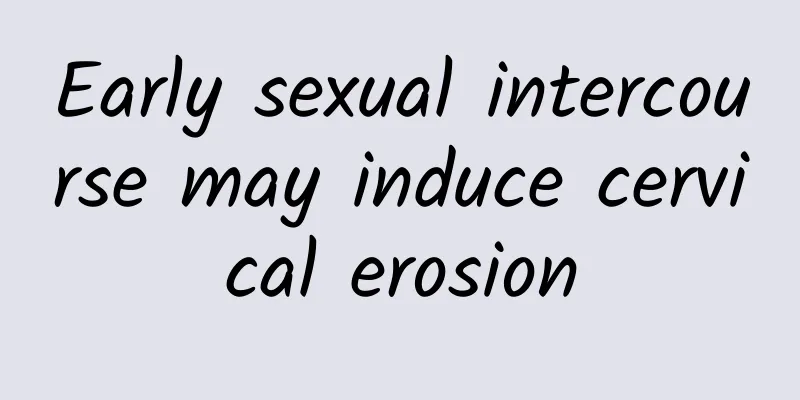What should be paid attention to in the treatment of endometrial tuberculosis

|
Endometrial tuberculosis is a common disease that occurs not only in married women, but also in unmarried women, and has a great impact on women's lives. Therefore, after the disease is diagnosed, it is necessary to treat it reasonably to simplify the patient's pain. So what are the common treatments for endometrial tuberculosis? Conservative surgery: mainly used for young people who want to have children. The uterus and its appendages are preserved (bilateral preservation is preferred), and only the lesions are removed, adhesions are separated, the ovaries are reconstructed, and tissues are repaired. In recent years, microsurgery has been used to remove tuberculosis lesions, carefully suture the wound surface, reconstruct the pelvic peritoneum, carefully stop bleeding, and thoroughly wash, so as to improve the surgical effect, increase the success rate of pregnancy after surgery, and reduce the recurrence rate. 1. Laparoscopic surgery: Laparoscopic examination can provide a clear diagnosis, and specially designed knives, scissors, and forceps can be used to remove the lesion and separate the adhesion. Under laparoscopy, CO2 laser or helium-neon laser can be used to cauterize the lesion, that is, a second incision is made 2 cm above the pubic symphysis, and the laser knife enters the pelvic cavity through the cannula of this incision, and the lesion is cauterized under direct laparoscope vision. The cyst fluid can also be aspirated through laparoscopic puncture, then rinsed with saline, and then injected with 5-10 ml of anhydrous ethanol, fixed for 5-10 minutes and then aspirated, and finally rinsed with saline and aspirated. 2. Ultrasound puncture of ovarian endometrioid cyst: For cases of recurrence after surgical dissection or laparoscopic puncture, ultrasound puncture and drug treatment can be considered. 3. Conservative laparotomy: It is used for patients with more serious lesions and adhesions, especially in medical institutions without laparoscopic equipment or those who are not proficient in laparoscopy. Laparotomy can be performed to separate adhesions and remove ovarian endometrioid cysts, and preserve normal ovarian tissue as much as possible. If the lesion is limited to one side and is more severe, and the other side is normal, some people advocate removing the adnexa on the diseased side. |
<<: How many courses of treatment are needed for endometrial tuberculosis?
>>: Treatment considerations for endometrial tuberculosis
Recommend
Bartholin's gland cyst is getting bigger during pregnancy
The main reasons for the enlargement of Bartholin...
Does losing weight mean eating small meals frequently? Nutritionist: Be careful, you may get fatter the more you lose weight
Every time we talk about weight loss, there is al...
Women should pay attention to the prevention of vaginitis in daily life
Vaginitis is a common disease and can cause great...
How does vulvar itching affect conception?
Does vulvar itching have any impact on female pre...
Prevent weight gain! Traditional Chinese medicine teaches you 3 steps to lose weight healthily, and the yo-yo effect will no longer occur
Obesity not only affects appearance, but also aff...
Let's learn about the health care knowledge of ectopic pregnancy
Ectopic pregnancy is a common disease in life, an...
What are the causes of endometriosis?
Endometriosis can infiltrate surrounding tissues ...
Weight Loss Action Diary Taipei Weight Management APP is launched
Smartphones can also be a weight loss aid! In ord...
What is the cost of treating intrauterine adhesions?
The thought of treatment gives ordinary families ...
What are the ways to prevent vaginitis?
Gynecological diseases are harmful to women, and ...
Mid-Autumn Festival barbecue will increase blood lipids and turn blood vessels into oil pipes! Dr. Zhou Jianan: 5 tips to avoid triglyceride explosion
The Mid-Autumn Festival is coming, and barbecue i...
Mushroom weight loss big S white mushroom pork ribs soup secret
European and American celebrity singers such as K...
Tiffany Hsu trains her abdominal muscles by doing 3 yoga "boat pose" variations! The most effective way to train abdominal muscles and vest lines
Tiffany Hsu demonstrates the 3 most effective &qu...
Create a "thin waist" goddess chair exercise to reduce belly fat
It’s actually very simple to create a slim and sl...
What is the main treatment for vulvar leukoplakia?
Vulvar leukoplakia is a common disease in life, a...









